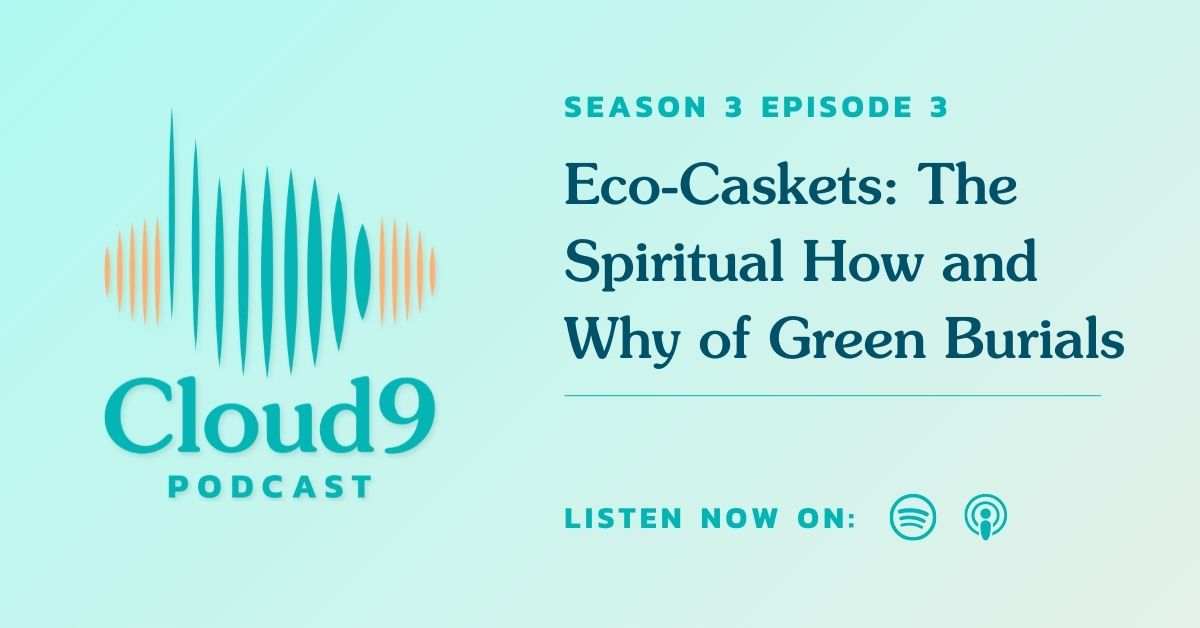The interplay between the natural order of life and the cessation of existence has long engaged human thought and spirituality. In the Bahá’í Faith, this subject extends into the domain of eco-caskets and green burials, merging ecological principles with spiritual ideals. The profound significance of how we honor our departed loved ones reveals an entwined relationship between our earthly stewardship and spiritual understandings. This exploration not only enhances our appreciation for the cycle of life but also rekindles a profound sense of responsibility toward our planet.
Green burials, characterized by their environmentally conscious practices, epitomize a transformative shift away from conventional burial methods. The primary focus is on ecological sustainability, eschewing toxic materials and elaborate embalming processes that are often detrimental to the environment. Instead, eco-caskets are crafted from biodegradable materials, allowing bodies to return to the soil naturally. This method aligns with the Bahá’í principle of stewardship, emphasizing that human beings must care for the earth and its resources.
In the Bahá’í teachings, the body is not merely a vessel; it is viewed as an integral part of the human experience. Upon death, the soul embarks on a journey that transcends the physical realm. Consequently, the manner in which one is laid to rest can reflect a deep spiritual understanding. By opting for eco-caskets, individuals affirm their commitment to the cycle of creation and the interconnectedness of all life forms. This decision transcends practical considerations and enters the realm of spiritual acknowledgment—life continues, albeit in a different form.
Moreover, the principles of unity and love underpin the Bahá’í viewpoint on death and dying. The concept of interdependence resonates deeply within the Bahá’í community, motivating adherents to embrace practices that honor not only the deceased but also the environment they leave behind. Through eco-caskets and green burials, individuals cultivate a reverence for nature, reflecting a belief that the physical world deserves as much dignity as the human spirit. It is a holistic approach that can evoke curiosity among those grappling with existential questions, prompting a reevaluation of societal norms related to death and remembrance.
Central to Bahá’í teachings is the notion of detachment—from worldly possessions and perhaps even from the physical form itself. This detachment fosters a serene acceptance of death, cultivating appreciation for the natural rhythms of life. Eco-caskets exemplify this value, as they encourage a return to simplicity in an era where consumerism often dominates significantly. The straightforwardness inherent in green burials challenges prevailing extravagance, steering attention toward the essence of existence. This simplicity evokes profound curiosity; it invites individuals to consider what truly matters in the face of mortality.
Engaging with eco-caskets also catalyzes a broader discourse on environmental ethics. In the contemporary world, where climate crises loom, the ramifications of our choices resonate loudly. Green burials embody a commitment to future generations, manifesting an eco-centric ethos that Bahá’ís and non-Bahá’ís alike can adopt. It establishes a legacy of ecological mindfulness and a profound affirmation of our responsibility as custodians of the earth. As we contemplate death, the spiritual and the natural entwine seamlessly, encouraging us to impart wisdom to future generations on caring for the environment, thus piquing curiosity about our enduring impact on the world.
The usage of eco-caskets facilitates a deeper connection with nature and the environment, fostering a sense of community among those who share a common purpose. Gatherings surrounding green burials often celebrate not only the life that has concluded but the collective commitment to sustainable practices. This transformative power of community resonates with the fundamental Bahá’í teachings on unity among humanity. When individuals come together for a green burial, they not only converge in mourning but also in a shared respect for the land that nourished the departed. This act of communal solidarity elevates the collective spirit, infusing environmental stewardship with profound meaning.
Furthermore, the choice of an eco-casket allows for personal expression. Each casket can be selected or crafted to reflect the individual’s identity and values. From natural fibers to local craftsmanship, these selections can serve as manifestations of one’s beliefs and passions, creating an individualized final tribute that honors the person’s life while remaining environmentally conscious. By incorporating elements of personal identity, eco-caskets create space for a dialogue about what it means to live in harmony with the earth, enveloping the act of dying in layers of significance.
As Bahá’ís embrace eco-caskets and green burials, they foster an evolutionary mindset. It encourages individuals to reflect on the relationship between death and the environment, prompting deeper questions about their beliefs. Through this lens, the material aspects of life become mere vessels for spiritual growth. Thus, the biophysical act of dying transcends into a meaningful nexus of connection with the divine, inviting curiosity, reverence, and ongoing dialogue about the future. The Bahá’í teachings, when interwoven with sustainable practices, illuminate a path where ecological responsibility and spiritual commitment coexist harmoniously.
In conclusion, the duality of eco-caskets and green burials presents an invitation to reimagine our relationship with death, the environment, and spirituality. Bahá’í teachings espouse a thoughtful exploration of these themes, proffering guidance on how to reflect profoundly on one’s place in the cosmos. Embracing the principles of stewardship and unity leads us not only to honor the lives of our loved ones but also the planet we inhabit. It is a holistic approach—a tribute to life that spurs curiosity and aligns spiritual beliefs with a commitment to our Earth, paving the way for a future where both can thrive in harmony.
